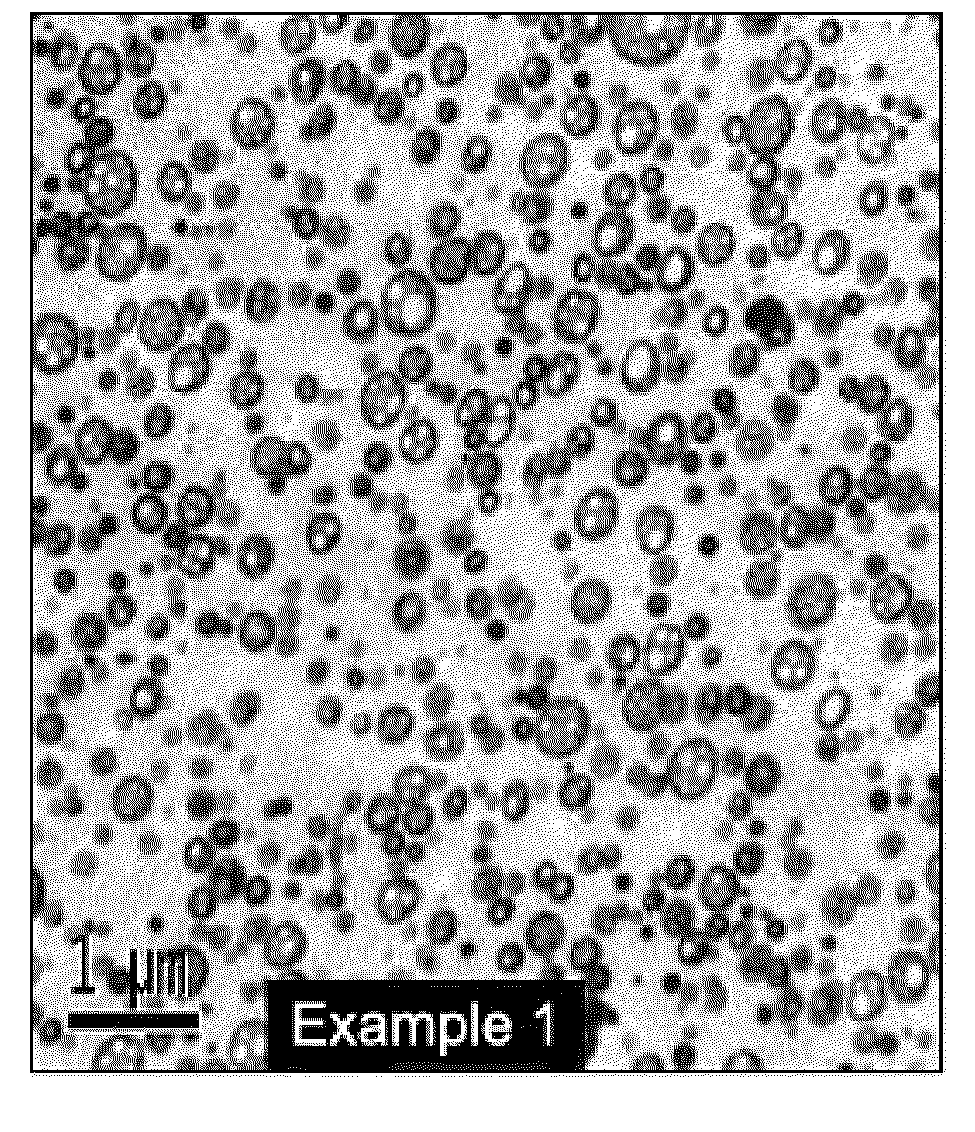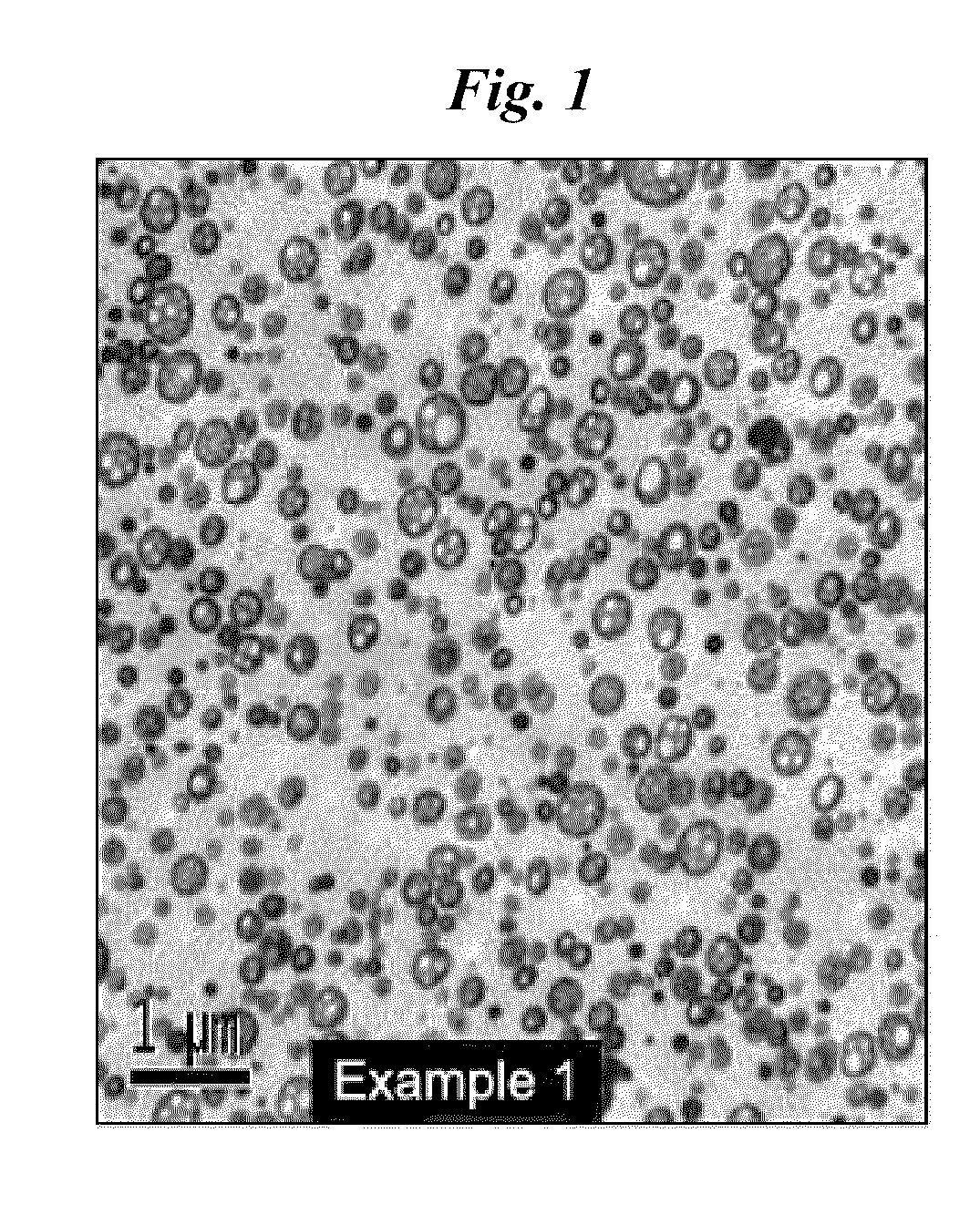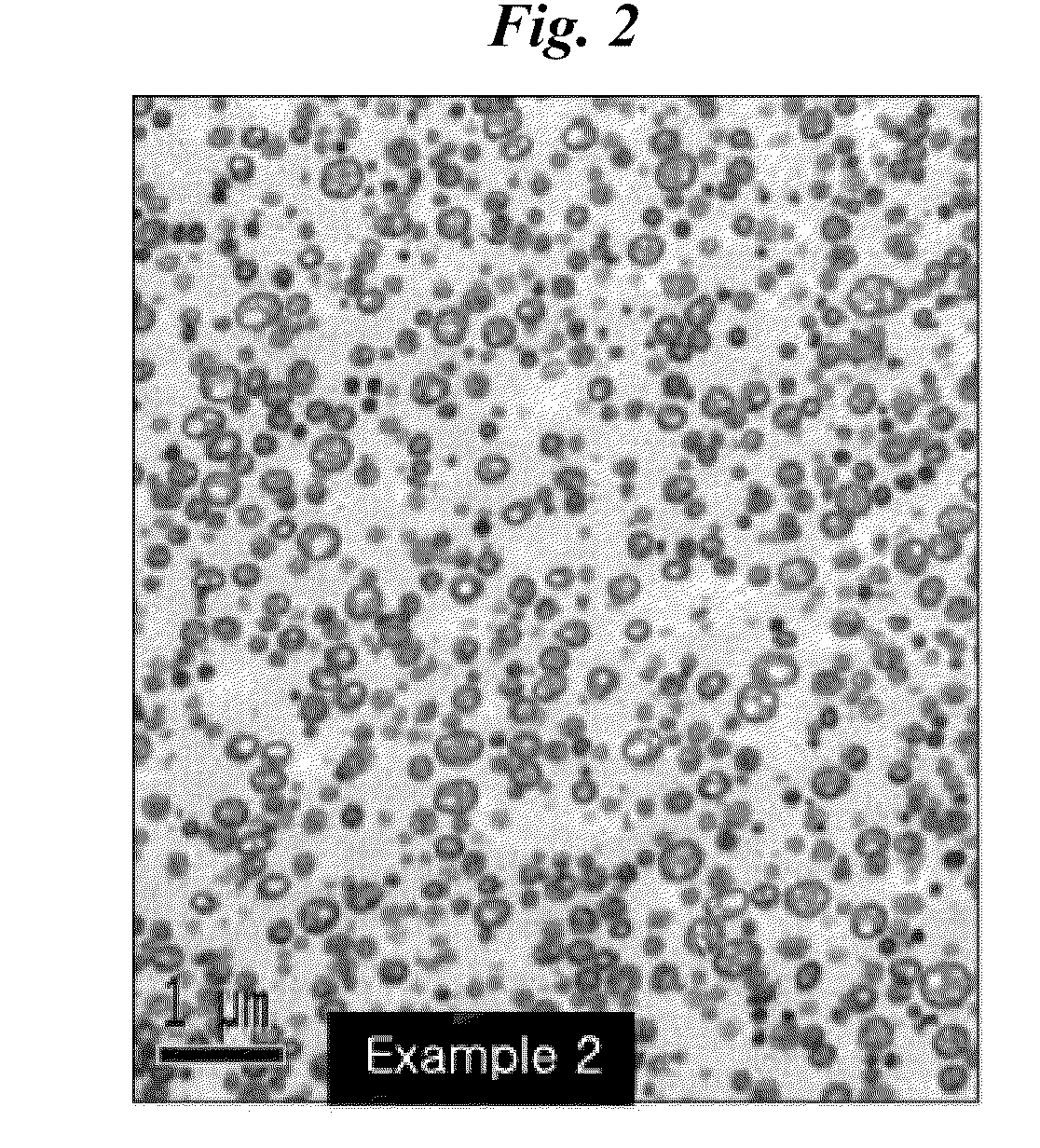Transparent Rubber Modified Styrene Resin and Method for Preparing the Same by Continuous Bulk Polymerization
a technology of transparent rubber and modified styrene, which is applied in the field of transparent rubber modified styrene and the preparation of the same by continuous bulk polymerization, can solve the problems of difficult control of rubber particle size, degrade the physical properties of the final product, and limit their use in many applications, and achieve good transparency, flowability, gloss and impact resistance.
- Summary
- Abstract
- Description
- Claims
- Application Information
AI Technical Summary
Benefits of technology
Problems solved by technology
Method used
Image
Examples
example 1
[0056]28 parts by weight of styrene monomer, 38 parts by weight of methyl methacrylate monomer, 2 parts by weight of acrylonitrile monomer, 12 parts by weight of styrene-butadiene rubbery copolymer (polystyrene content: 25 wt. %) and 20 parts by weight of ethyl benzene are added into a mixing tank with stirring until the styrene-butadiene rubbery copolymer become completely dissolved. On a basis of 100 parts by weight of an initial mixture (a mixture of monomers and solvent), 0.12 parts by weight of t-butyl (2-ethylhexyl)peroxycarbonate as a polymerization initiator and 0.26 parts by weight of n-dodecyl mercaptan as a molecular weight controlling agent are further added thereto to prepare a raw material solution. The formulation in the monomer mixture is adjusted to provide a refractive index of styrene-methyl methacrylate-acrylonitrile terpolymer (continuous phase (matrix resin)) in a first reactor to match that of the styrene-butadiene rubbery copolymer, (dispersed phase).
[0057]Th...
example 2
[0061]Example 2 is prepared in the same manner as in Example 1 except that 30 parts by weight of styrene monomer, 36 parts by weight of methyl methacrylate monomer, 2 parts by weight of acrylonitrile monomer, 12 parts by weight of styrene-butadiene rubbery copolymer (polystyrene content: 25 wt. %) and 20 parts by weight of ethyl benzene are used as an initial mixture. Further, methyl methacrylate monomer is continuously added in the second reactor in an amount of 3 parts by weight (instead of styrene), and the amount of styrene monomer added in the third reactor is changed to 3 parts by weight.
example 3
[0062]Example 3 is prepared in the same manner as in Example 1 except that 21 parts by weight of styrene monomer, 45 parts by weight of methyl methacrylate monomer, 2 parts by weight of acrylonitrile monomer, 12 parts by weight of styrene-butadiene rubbery copolymer (polystyrene content: 15 wt. %) and 20 parts by weight of ethyl benzene are used as an initial mixture. Further, the amount of styrene monomer added in the second reactor is changed to 3 parts by weight, and that of styrene monomer added in the third reactor is changed to 3 parts by weight.
PUM
| Property | Measurement | Unit |
|---|---|---|
| Nippon Denshoku Haze meter | aaaaa | aaaaa |
| refractive index | aaaaa | aaaaa |
| transparent | aaaaa | aaaaa |
Abstract
Description
Claims
Application Information
 Login to View More
Login to View More - R&D
- Intellectual Property
- Life Sciences
- Materials
- Tech Scout
- Unparalleled Data Quality
- Higher Quality Content
- 60% Fewer Hallucinations
Browse by: Latest US Patents, China's latest patents, Technical Efficacy Thesaurus, Application Domain, Technology Topic, Popular Technical Reports.
© 2025 PatSnap. All rights reserved.Legal|Privacy policy|Modern Slavery Act Transparency Statement|Sitemap|About US| Contact US: help@patsnap.com



